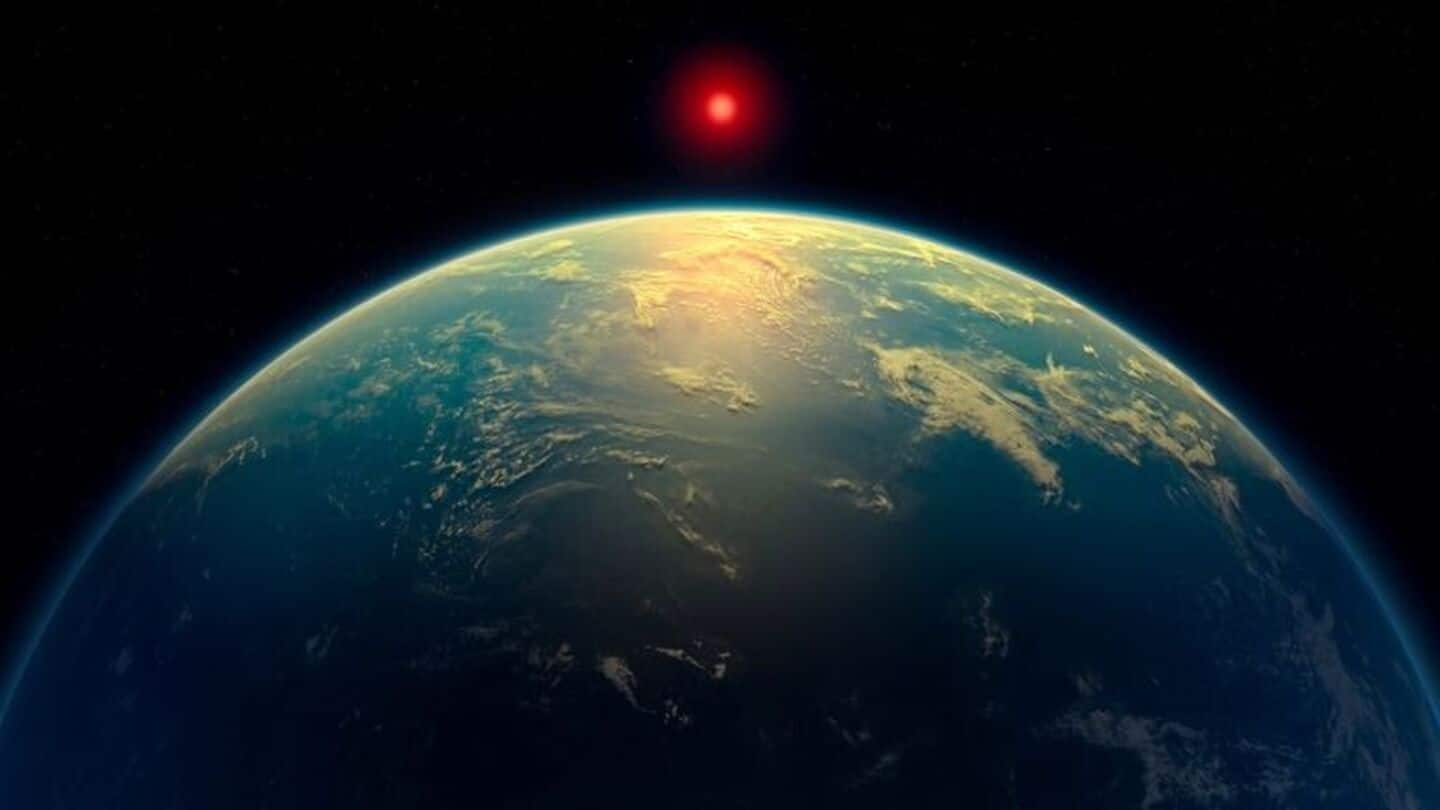'Strongest evidence' of aliens found on this planet
What's the story
Astronomers have found what they believe to be the strongest evidence yet that extraterrestrial life might be thriving beyond our solar system.
The discovery was made on a massive planet, 124 light-years away from Earth, called K2-18 b.
The observations from the James Webb Space Telescope suggest that this planet has chemical signatures of two compounds, dimethyl sulfide (DMS) and dimethyl disulfide (DMDS).
On Earth, they are primarily associated with biological activity.
Profile
A look at planet K2-18 b
K2-18 b is nearly nine times more massive than Earth. It orbits within the habitable zone of its star, a cool red dwarf less than half the size of our Sun.
The planet's profile suggests it could be a habitable world covered with an extensive ocean, although this view is still debated among scientists.
Process
How were the chemicals detected?
The compounds DMS and DMDS were detected in K2-18 b's atmosphere, by tracking the exoplanet as it passed across the face of its host star.
This was achieved by measuring starlight filtered through its atmosphere.
The team led by astrophysicist Professor Nikku Madhusudhan from University of Cambridge, reported that wavelengths absorbed by these molecules suddenly dropped off as K2-18 b transited in front of the red dwarf star.
Results
Findings suggest high concentrations of DMS and DMDS
The research findings, published in The Astrophysical Journal Letters, reveal concentrations of DMS and DMDS thousands of times stronger than those found on Earth.
While there may be unknown processes producing these molecules, Professor Madhusudhan said, "I don't think there is any known process that can explain this without biology."
Discussions
Debate continues over conditions on K2-18 b
The conditions on K2-18 b are still up for debate among scientists.
Some researchers propose that DMS and DMDS may have been delivered to the planet by comets or produced through exotic chemical processes in volcanoes, hydrothermal vents, or lightning storms.
Dr. Nora Hanni, a chemist at the University of Bern, said while life is one possibility for these findings, it's just one among many other potential explanations.
